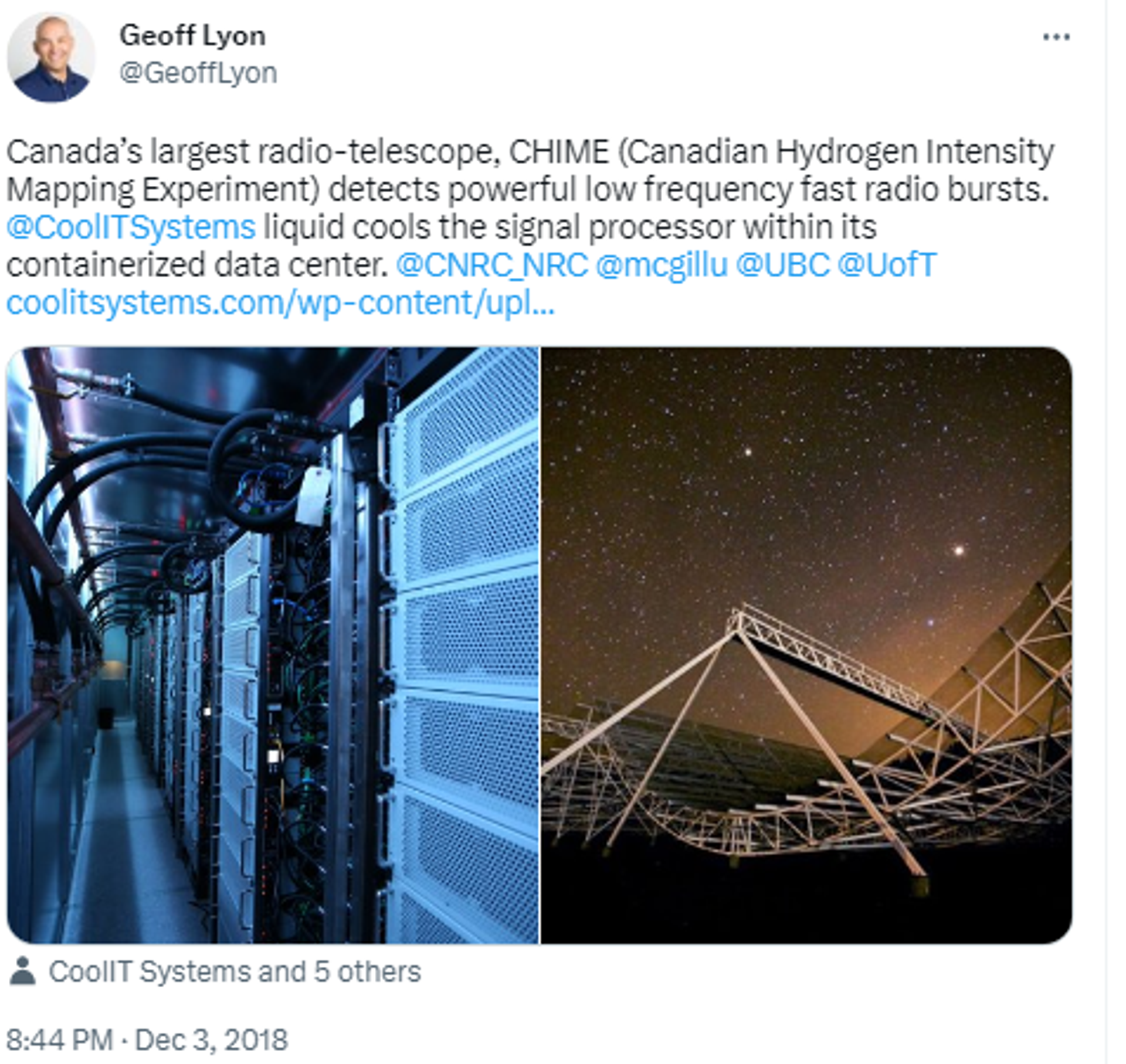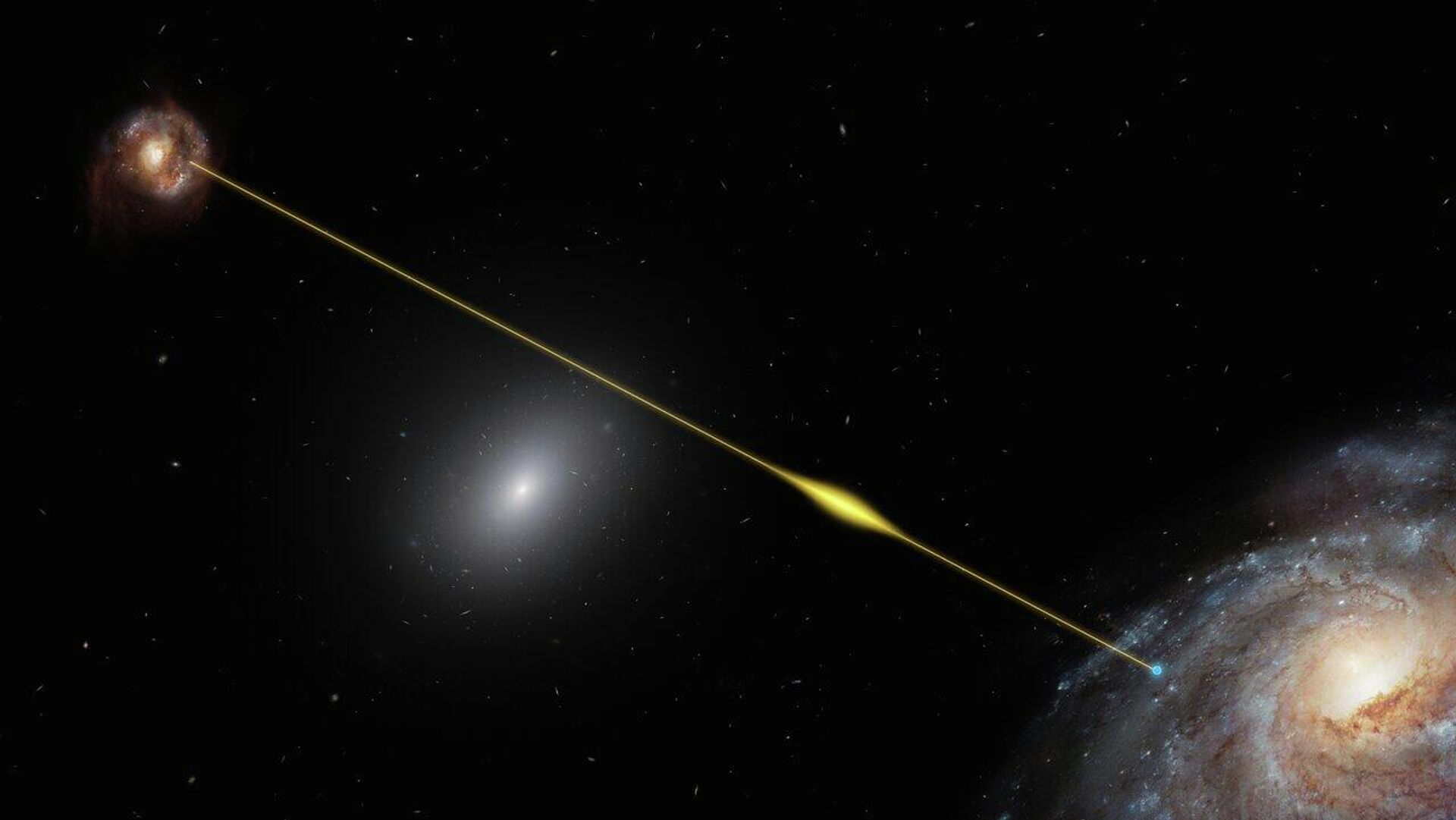https://sputnikglobe.com/20230428/repeating-alien-radio-signals-from-space-may-unlock-one-of-astronomys-mysteries-1109916456.html
Repeating 'Alien' Radio Signals From Space May Unlock One of Astronomy's Mysteries
Repeating 'Alien' Radio Signals From Space May Unlock One of Astronomy's Mysteries
Sputnik International
25 new deep space radio signals, FRBs, have been identified from repeating sources by astronomers from the Canadian-led CHIME/FRB Collaboration.
2023-04-28T13:54+0000
2023-04-28T13:54+0000
2023-04-28T13:54+0000
beyond politics
science & tech
astronomy
milky way
chime
fast radio burst (frb)
electromagnetic waves
https://cdn1.img.sputnikglobe.com/img/07e6/02/1a/1093381246_0:0:1281:721_1920x0_80_0_0_26a522d00402f8f13c05ce7b478b2d9a.jpg
Among the thousands of deep space 'alien' radio signals detected here on Earth, 25 new ones have been identified from repeating sources by a collaboration of scientists.The sources of the repeating fast radio bursts - FRBs – were discovered among events detected by the Canadian-led CHIME/FRB Collaboration between September 30, 2019, and May 1, 2021, according to the new research published in the Astrophysical Journal. The astronomers had a specially-tailored algorithm, allowing them to survey the gathered data on these FRBs, which are bright flashes of light, registering in the radio band of the electromagnetic spectrum. They were able to find every repeating source detected so far. The fact that 25 were from repeating sources out of an overall number of 50 appeared to confirm the theory that FRBs may eventually repeat.According to the collaboration, which incorporates the University of British Columbia, McGill University, the University of Toronto, and the Dominion Radio Astrophysical Observatory with other institutions across North America, FRBs are "one of the biggest mysteries in astronomy."They are confirmed to be emanating from outside our Milky Way galaxy.Of course, this discovery would not have been possible without the large stationary CHIME telescope in British Columbia. Known as CHIME, for the Canadian Hydrogen Intensity Mapping Experiment, once it became operational, it resulted in an increased rate of interception of these bursts "from a few tens, to thousands." Thus, CHIME detected 535 new fast radio bursts during its first year of operation, between 2018 and 2019.According to the researchers, the FRBs are in great probability produced by "leftovers from explosive stellar deaths." When a repeater radio burst is detected, the astronomers clarified, the source can be observed using instruments operating in the non-radio part of the electromagnetic spectrum. The astronomer added that going forward, the new tools and algorithms used for this study would be very useful for further research.
https://sputnikglobe.com/20220807/best-physical-models-cant-fit-the-data-radio-bursts-detected-in-space-defy-existing-theories-1099359972.html
Sputnik International
feedback@sputniknews.com
+74956456601
MIA „Rossiya Segodnya“
2023
News
en_EN
Sputnik International
feedback@sputniknews.com
+74956456601
MIA „Rossiya Segodnya“
Sputnik International
feedback@sputniknews.com
+74956456601
MIA „Rossiya Segodnya“
deep space, 'alien' radio signals, repeating fast radio bursts, detected from outside milky way galaxy, canadian-led chime/frb collaboration, radio band of the electromagnetic spectrum, bursts coming from similar locations, not a coincidence
deep space, 'alien' radio signals, repeating fast radio bursts, detected from outside milky way galaxy, canadian-led chime/frb collaboration, radio band of the electromagnetic spectrum, bursts coming from similar locations, not a coincidence
Repeating 'Alien' Radio Signals From Space May Unlock One of Astronomy's Mysteries
The Canadian Hydrogen Intensity Mapping Experiment has at its disposal a high-powered radio telescope, set up in British Columbia, to receive signals from deep space. Its recent discovery pertained to what is considered "one of the biggest mysteries in astronomy."
Among the thousands of
deep space 'alien' radio signals detected here on Earth, 25 new ones have been identified from
repeating sources by a collaboration of scientists.
The sources of the repeating fast radio bursts - FRBs – were discovered among events detected by the Canadian-led CHIME/FRB Collaboration between September 30, 2019, and May 1, 2021, according to the new research
published in the
Astrophysical Journal. The astronomers had a specially-tailored algorithm, allowing them to survey the gathered data on these FRBs, which are bright flashes of light, registering in the
radio band of the electromagnetic spectrum. They were able to find every repeating source detected so far. The fact that 25 were from repeating sources out of an overall number of 50 appeared to confirm the theory that FRBs may eventually repeat.
"Most of the thousands of FRBs that astronomers have discovered to date have only ever been seen to burst once, but there is a small subset that have been seen to burst multiple times. One of the big questions is whether the repeating FRBs and those that don’t repeat have similar origins," said the collaboration.
According to the collaboration, which incorporates the University of British Columbia, McGill University, the University of Toronto, and the Dominion Radio Astrophysical Observatory with other institutions across North America, FRBs are "one of the biggest mysteries in astronomy."
They are confirmed to be emanating from outside our
Milky Way galaxy.
"We can now accurately calculate the probability that two or more bursts coming from similar locations are not just a coincidence," Dr. Ziggy Pleunis, a Dunlap Postdoctoral Fellow at the Dunlap Institute for Astronomy and Astrophysics and corresponding author of the publication, said.
Of course, this discovery would not have been possible without the large stationary CHIME telescope in British Columbia. Known as CHIME, for the Canadian Hydrogen Intensity Mapping Experiment, once it became operational, it resulted in an increased rate of interception of these bursts "from a few tens, to thousands." Thus, CHIME detected 535 new fast radio bursts during its first year of operation, between 2018 and 2019.
According to the researchers, the FRBs are in great probability produced by "leftovers from explosive stellar deaths." When a repeater radio burst is detected, the astronomers clarified, the source can be observed using instruments operating in the non-radio part of the electromagnetic spectrum.
"By studying repeating FRB sources in detail, we can study the environments that these explosions occur in and understand better the end stages of a star's life," Pleunis said.
The astronomer added that going forward, the new tools and algorithms used for this study would be very useful for further research.




